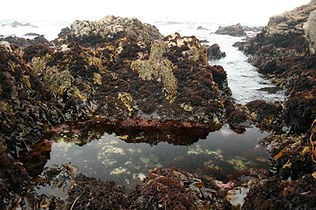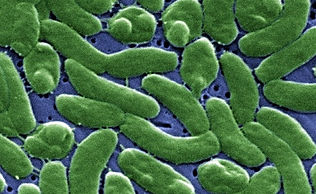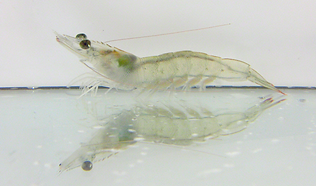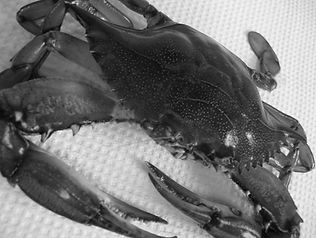
Hardy Lab
Marine Environmental Physiology
Effects of 4-Nonylphenol on Immunocompetence and Disease Susceptibility in the Pacific Oyster, Crassostrea gigas
Endocrine disrupting compounds (EDC’s) are exogenous agents that interfere with hormonal signaling pathways. EDCs can be either synthetic or natural chemicals, and are now recognized as pervasive in estuarine and marine waters. One emerging EDC in California’s coastal waters is the xenoestrogen 4-nonylphenol (4-NP), a breakdown product of industrial nonlyphenol ethoxylates. Recently, 4-NP has been detected in moderate levels in seawater, sediment and organismal tissue samples from California estuaries. In marine invertebrates, 4-NP exposure has been shown to impair reproduction, development, and, in a small number of studies, immune function
In this study we we are investigating the impacts of 4-NP exposure on immune competence and disease resistance in the Pacific oyster, Crassostrea gigas. Specifically, we challenge oysters with a marine bacterium (Vibrio spp.), and then evaluate how 4-NP exposure affects the immune response to this bacterial challenge. Our comprehensive assessment will include the following: 1) measures of both the cellular and humoral elements of the innate immune defense system (total hemocyte counts, superoxide anion production and hemocyte lysozyme activity), 2) molecular-level characterizations of gene transcript changes, 3) assessment of broad spectrum proteome responses, and 4) quantifications of overall organismal pathogen susceptibility.
Taken as a whole, these broad measures of C. gigas immune function will deliver a thorough picture of the impacts that coastal 4-NP contamination is having for pathogen susceptibility and disease resistance in an economically valuable seafood species in California.
Funded by: CA Sea Grant - New Investigator Award (to Kristin M. Hardy)




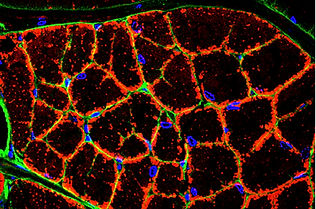

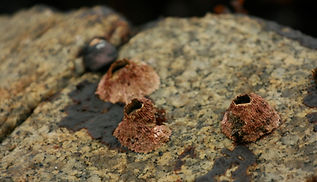
Diffusion Effects on Skeletal Muscle Energetics & Design
We use both experimental and modeling approaches to examine how intracellular diffusive transport processes influence cellular energetics and structural organization in skeletal muscle. The issue of diffuse flux is largely ignored within the fields of biochemistry and cellular energetics, as diffusion rates inside of a cell are generally assumed to be rapid relative to enzyme reaction rates, but this isn’t always the case. Portunid swimming crabs, for example, are known for their unusually large skeletal muscle fibers (<600 μm in diameter), as well as their excellent aerobic swimming ability. Whereas typical adult mammalian skeletal muscle fibers are approximately 10-50 μm in diameter, blue crab (Callinectes sapidus) fibers are only small (<60 μm) in the juveniles and grow hypertrophically to exceed 600 μm in diameter in the adults. In the giant acorn barnacle (balanus nubilus) skeletal muscle fiber diamters of greater than 1mm (1000 μm)have been observed! At these sizes, excessive intracellular diffusion distances and low surface area to volume ratios should prohibit aerobic metabolism (and ultimately locomotor behavior). For this reason, the blue crab represents an excellent model organism for studying the role of diffusion in regulating metabolic rates.
This project can be broadly divided into four main research objectives: 1) assess the extent to which diffusion may control aerobic metabolism during extreme fiber growth in blue crab skeletal muscle, 2) investigate the intracellular organization of blue crab muscle fibers during growth to determine whether diffusion constraints play a role in shaping the evolution of skeletal muscle fiber design, 3) determine whether the cellular level responses to diffusion constraints are universally observed in all cells, and 4) explore the effect of limited environmental oxygen (e.g., hypoxic zones, intertidal emersion of sessile organisms) on crustacean skeletal muscle energetics and structure (namely in barnacle). Ultimately we have determined that aerobic metabolism in the giant skeletal muscle fibers of the adult blue crab is not limited by diffusion, however, it is on the brink of being severely diffusion limited. Using a reaction-diffusion mathematical model we resolved that these animals are able to maintain normal muscle function during extreme growth by dramatically altering their fiber’s structural organization as they get larger (i.e., changing the distribution of organelles or the pattern of intra-fiber perfusion). Furthermore, the same cellular level responses to diffusion constraints have been observed in the homologous muscle group from eight different species of Brachyuran crab, indicating that the influence of diffusion on fiber design may be universal.
Environmental Stress and Immune Function
Whereas the previous project is focused on the effects of reduced oxygen flux at the cellular level, here we are concerned with understanding the physiological effects of reduced whole-animal and environmental oxygen. More specifically, we are investigating the metabolic and behavioral response of marine invertebrates to environmental stress [hypoxia (low oxygen) and hypercapnia (high carbon dioxide)] and immune challenge (bacterial infection)], both singularly and in combination. As global climates change, estuarine organisms are predicted to be more frequently exposed to hypoxic and hypercapnic conditions, while environmental pathogen loads and antibiotic resistant bacterial strains concurrently increase in number. In many invertebrate species hypoxia and immune challenge generate a state of metabolic depression characterized by a decrease in oxygen consumption rates. Such metabolic depression can have disastrous consequences to the health, behavior and reproductive fitness of exposed animals. The interactive effects of hypoxia and infection, however, could be even more severe, potentially leading to widespread mortality.
The goals of this project are as follows: 1) elucidate the mechanisms that result in the observed metabolic depression response to hypoxia, hypercapnia and immune challenge, 2) investigate the consequences of hypoxic/hypercapnic exposure on locomotor activity, and 3) investigate the role of hypoxia inducible factor-1 (HIF-1) and AMP activated protein kinase (AMPK) – a metabolic fuel sensor – as molecular mechanisms underlying metabolic changes associated with hypoxia and immune challenge in marine invertebrates.
I work primarily with the Pacific whiteleg shrimp, Litopenaeus vannamei, and the blue crab, Callinectes sapidus – both species of substantial economic importance. Currently, we are examining the effects of hypercapnic hypoxia on fractional protein synthesis rates, which if reduced may explain the observed metabolic depression. Relative protein synthesis rates are determined by comparing the amount of actively translating polysomes (mRNA with multiple attached ribosomes) in hypoxic and normoxic exposed animals, while specific protein synthesis rates are quantified by a ‘flooding-dose’ of the tritiated amino acid phenylalanine. Subsequently, we will compare exercise performance and oxygen consumption of L. vannamei and C. sapidus on a treadmill under hypoxia (or hypercapnic hypoxia) and normoxia. Finally, I plan to investigate the dynamics of HIF-1 and AMPK in the crustacean response to hypoxia using western blots and quantitative real-time PCR.
